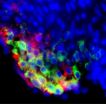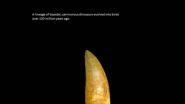(Press-News.org) GAINESVILLE, Fla. --- By tracing nearly 3,000 genes to the earliest common ancestor of butterflies and moths, University of Florida scientists have created an extensive "Tree of Lepidoptera" in the first study to use large-scale, next-generation DNA sequencing.
Among the study's more surprising findings: Butterflies are more closely related to small moths than to large ones, which completely changes scientists' understanding of how butterflies evolved. The study also found that some insects once classified as moths are actually butterflies, increasing the number of butterfly species higher than previously thought.
"This project advances biodiversity research by providing an evolutionary foundation for a very diverse group of insects, with nearly 160,000 described species," said Akito Kawahara, lead author and assistant curator of Lepidoptera at the Florida Museum of Natural History on the UF campus. "With a tree, we can now understand how the majority of butterfly and moth species evolved."
Available online and to be published in the August print edition of the Proceedings of the Royal Society B: Biological Sciences, the study builds the evolutionary framework for future ecological and genetics research of insects, Kawahara said.
"There is a DNA revolution taking place," Kawahara said. "This is an important time in the history of science when we can use DNA sequencing on a very large scale."
Kawahara said the yearlong study is one of the first to utilize a massive amount of genetic data to answer questions about the history of butterflies and moths. The analysis reveals monumental discoveries about the lineage of Lepidoptera, including strongly contradicting the traditional placement of butterflies in evolutionary history, Kawahara said.
Using next-generation sequencing, a method used to rapidly process large amounts of DNA, scientists developed an initial sample of 46 species that represent many of the most bio diverse groups of moths and butterflies. They also combined 33 new transcriptomes, a set of RNA molecules, with 13 genomes, both of which hold genetic material for organisms. The researchers identified 2,696 genes by breaking down the DNA down and piecing it back together, Kawahara said.
Daniel Rubinoff, entomologist and director of the University of Hawaii Insect Museum, said the new study will help scientists conclusively pinpoint where butterflies belong in evolutionary history -- a question that has long troubled researchers.
"This study adds to a growing body of knowledge by bringing new techniques to the table and conclusively demonstrating the evolutionary relationships of the most popular insects on the planet," Rubinoff said. "The methods are novel and build on previous work. This is clearly the future of deep-level evolutionary research."
The wispy, delicate nature of butterflies and moths is part of their charm, but their soft-bodied larval stages have posed a problem for scientists studying them in the fossil record. In the current study, scientists aimed to better understand an evolutionary history that morphological analysis and the fossil record has fallen short of firmly establishing, said Jesse Breinholt, co-author and a postdoctoral researcher with the Florida Museum.
"The few Lepidoptera fossils we have are from about 15 million years ago," Breinholt said. "The next step is to create a dated evolutionary history for the group, from the earliest ancestors to present day."
Previous research based on anatomical features hypothesized that butterflies are close relatives of large moths, but the new tree suggests butterflies are more closely related to small (micro) moths, Kawahara said. The study also suggests butterflies are the ancestral group to the tens of thousands of moth species on the planet, and the Hedylidae family, commonly known as American butterfly-moths, were dismissed as moths and found to be true butterflies.
The tree also provides a baseline to test whether diurnal, or daytime, activity, a common butterfly trait, evolved much earlier than scientists previously believed, possibly at a time when bats' spread across the planet, as a means of escaping these and other nocturnal predators, Kawahara said.
Future research will investigate the causes of evolutionary transitions, such as diurnal activity, across Lepidoptera. Breinholt said although the new tree clarifies our understanding of butterfly and moth relationships, many lineages still need to be examined.
"I hope this is a starting point for larger studies that account for the great diversity of Lepidoptera," Breinholt said.
INFORMATION:
UF study advances 'DNA revolution,' tells butterflies' evolutionary history
2014-07-31
ELSE PRESS RELEASES FROM THIS DATE:
NYU CDUHR researchers look at prescription opioid abuse among young adults in NYC
2014-07-31
The prevalence of heroin use has been rising steadily in the U.S in recent years. According to the National Survey on Drug Use and Health, the number of individuals reporting past year heroin use almost doubled between 2007 (373,000) and 2012 (669,000). Emerging evidence suggests the increase may be linked to prescription opioid (PO) users who transition from oral and/or intranasal PO use to heroin use, with POs providing the entryway to regular opioid use, and ultimately, heroin injection. This drug-use trajectory appears to have become increasingly common over the past ...
NYU research looks to combat US Latina immigrant obesity
2014-07-31
According to the U.S. Census Bureau, Latinos are the largest minority group in the United States, comprising 16.7% of the population. Approximately one-third of Latinos are obese and are 1.2 times as likely to be obese compared to non-Hispanic Whites.
NYU College of Nursing student researcher Lauren Gerchow, BSN, RN, MSN candidate, has sought to identify the factors that contribute to this problem by compiling a systematic review of qualitative studies that focused on food patterns in Latina women recently published in Nursing Research.
"The review focuses on women ...
Stanford professor finds that wildfires and other burns play bigger role in climate change
2014-07-31
It has long been known that biomass burning – burning forests to create agricultural lands, burning savannah as a ritual , slash-and-burn agriculture and wildfires – figures into both climate change and public health.
But until the release of a new study by Stanford University Civil and Environmental Engineering Professor Mark Z. Jacobson, the degree of that contribution had never been comprehensively quantified.
Jacobson's research, detailed in a paper published July 30 in the Journal of Geophysical Research: Atmospheres, is based on a three-dimensional computer model ...
Childhood coxsackie virus infection depletes cardiac stem cells and might compromise heart health in adults
2014-07-31
There is epidemiological evidence that links type B coxsackie virus (CVB) infection with heart disease, and research published on July 31st in PLOS Pathogens now suggests a mechanism by which early infection impairs the heart's ability to tolerate stress at later stages of life.
CVB infection is very common and affects mostly children. The symptoms range widely: over half of the infections are thought to be asymptomatic, the majority of children who get sick have only a mild fever, and a very small proportion get inflammation of the heart or brain. On the other hand, ...
Multidisciplinary study reveals big story of cultural migration
2014-07-31
Quantifying and transforming the history of culture into visual representation isn't easy. There are thousands of individual stories across millennia to consider, and some historical conditions are nearly impossible to measure.
Addressing this challenge, Dr. Maximilian Schich, associate professor of arts and technology at The University of Texas at Dallas, has brought together a team of network and complexity scientists to create and quantify a big picture of European and North American cultural history.
Schich, an art historian who works under the umbrella of the ...
Shrinking dinosaurs evolved into flying birds
2014-07-31
VIDEO:
This movie is an animated version of how birds arose from a very special lineage of evolving dinosaurs.
Click here for more information.
A new study involving scientists from the University of Southampton has revealed how massive, meat-eating, ground-dwelling dinosaurs evolved into agile flying birds: they just kept shrinking and shrinking, for over 50 million years.
Today, in the journal Science, the researchers present a detailed family tree of dinosaurs and their ...
Innovative 'genotype first' approach uncovers protective factor for heart disease
2014-07-31
Cambridge, MA. Thurs. July 31, 2014 — Extensive sequencing of DNA from thousands of individuals in Finland has unearthed scores of mutations that destroy gene function and are found at unusually high frequencies. Among these are two mutations in a gene called LPA that may reduce a person's risk of heart disease. These findings are an exciting proof-of-concept for a new "genotype first" approach to identifying rare genetic variants associated with, or protecting from, disease followed by extensive medical review of carriers. The new study by researchers from the Broad Institute, ...
A mathematical theory proposed by Alan Turing in 1952 can explain the formation of fingers
2014-07-31
Alan Turing, the British mathematician (1912-1954), is famous for a number of breakthroughs, which altered the course of the 20th century. In 1936 he published a paper, which laid the foundation of computer science, providing the first formal concept of a computer algorithm. He next played a pivotal role in the Second World War, designing the machines which cracked the German military codes, enabling the Allies to defeat the Nazis in several crucial battles. And in the late 1940's he turned his attention to artificial intelligence and proposed a challenge, now called the ...
Nanostructured metal-oxide catalyst efficiently converts CO2 to methanol
2014-07-31
UPTON, NY-Scientists at the U.S. Department of Energy's (DOE) Brookhaven National Laboratory have discovered a new catalytic system for converting carbon dioxide (CO2) to methanol-a key commodity used to create a wide range of industrial chemicals and fuels. With significantly higher activity than other catalysts now in use, the new system could make it easier to get normally unreactive CO2 to participate in these reactions.
"Developing an effective catalyst for synthesizing methanol from CO2 could greatly expand the use of this abundant gas as an economical feedstock," ...
Refocusing research into high-temperature superconductors
2014-07-31
Below a specific transition temperature superconductors transmit electrical current nearly loss-free. For the best of the so-called high-temperature superconductors, this temperature lies around -180 °C – a temperature that can be achieved by cooling with liquid nitrogen.
The location of atomic nuclei and binding electrons in a material is determined by its crystal structure. However, electrons additionally have an electromagnetic angular momentum, referred to as spin. When many spins become coupled in a material, electromagnetic disturbances with a preferential orientation ...





